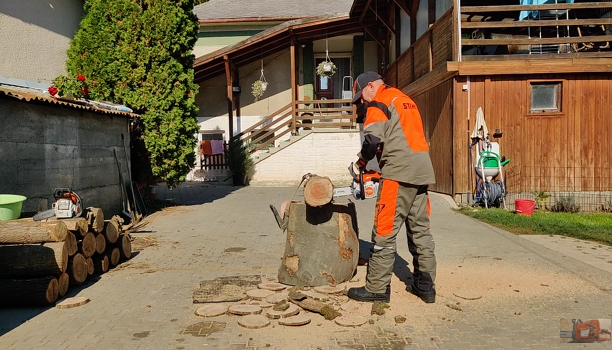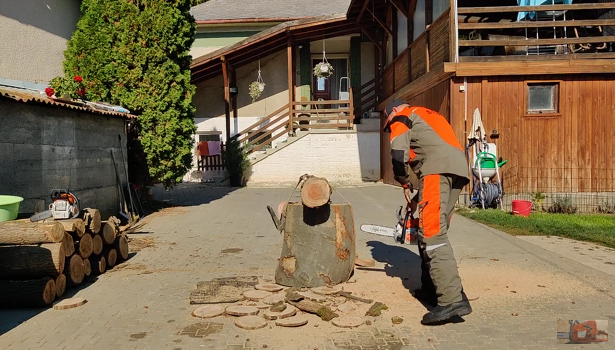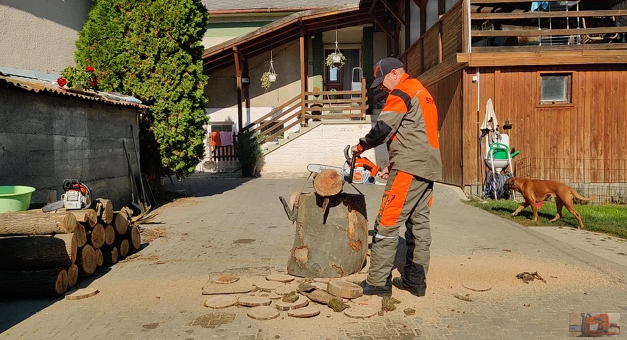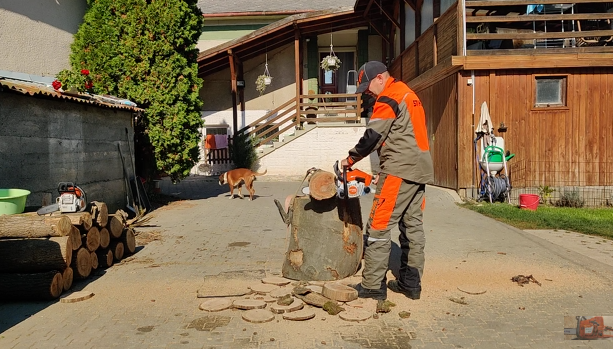
When I first picked up the STIHL MS 162, I was excited. This was STIHL’s budget-friendly chainsaw that promised serious value in a lightweight package. It’s no MS 261, of course, but for its price and size, it seemed perfect for pruning, light felling, and storm cleanup. My plan was to try it with the stock 14″ bar, then experiment by switching to a 12″ light bar and matching low-profile chain. That experiment turned out to be more interesting than expected.
Let me walk you through what happened — the good, the bad, and the oddly hilarious chain fail that nearly sent the bar flying (okay, not quite, but close enough to make me jump). 😅

Meet the STIHL MS 162
The STIHL MS 162 is a compact, 2-MIX engine chainsaw built primarily for homeowners, hobbyists, and light-duty firewood cutters. It delivers around 1.6 hp and weighs just under 9 lbs without fuel. Out of the box, it’s fitted with a 14-inch bar and 3/8″ P Picco chain, which makes it ideal for small tasks.
Right away, I appreciated its clean design and intuitive controls. The start-up sequence was smooth (choke on, one pull, choke off, second pull, and vroom — running). For a saw under 200cc, the throttle response was snappy and satisfying. I put it through a few basic tests — limbing, bucking, and small log slicing — and it delivered admirably. For its class, it’s a little beast.
But like many tinkerers, I wasn’t satisfied with just “normal.” That’s where things got fun… and weird. 😏

The 12″ Light Bar Experiment
After a week of using the MS 162 with the stock 14″ bar, I decided to try a lightweight mod — a 12″ STIHL Rollomatic E Light bar with a thinner kerf and a matching 3/8″ Picco chain. The goal was to reduce drag, improve chain speed, and maximize cutting performance by shaving a bit of weight and reducing bar length.
Swapping bars was easy — loosen the chain cover, remove the side tensioner, and mount the 12″ bar with its custom-matched chain. It fit fine, tensioned easily, and spun freely.
I revved the saw up. It sounded great — a little zippier even. I was optimistic.
First Cut: Smooth
On the first few cuts, everything worked perfectly. I was slicing through 4-6 inch maple branches like butter. The saw felt more nimble and even slightly quieter. It was exactly what I’d hoped for — lighter, faster, and still powerful.
But then came the curveball.

The Chain Fail Begins… 😳
After about ten minutes of cutting, I felt a strange vibration — not strong, but definitely not normal. I shut off the saw and checked the bar. All seemed tight. Chain tension was okay. I resumed.
Then, mid-cut, the chain jumped the bar. I gasped. Not because it was dangerous — thankfully the chain brake kicked in — but because it happened so suddenly, and I had just checked the setup.
I removed the cover. The chain had derailed and was kinked at the drive links. One of the rivets had even popped halfway out of a cutter tooth. That chain was toast.
I checked the bar and saw it had developed minor rail damage — probably from misalignment or too much tension. Worse, the sprocket tip had a tiny warp. How did this happen?
Lessons From the Fail
After some investigation (and mild grumbling), I figured out what likely went wrong:
1. Mismatch in Chain Gauge Tolerance
The light bar required a 1.1mm gauge chain, and I had assumed my replacement was compatible. It wasn’t — it was slightly looser than it should’ve been, leading to instability under load.
2. Higher RPM, Lower Chain Stability
The shorter, lighter bar reduced drag — which increased chain speed. That should be good, but the MS 162 isn’t built with high chain speed tolerances. At higher speeds, the low-mass bar+chain combo became unstable when loaded unevenly.
3. Chain Tension Misjudgment
Lighter bars expand and flex differently than regular ones. I’d set tension cold, and once the saw warmed up, the chain got slack — just enough to derail during an angled cut.

Fixing the Setup
After a trip to the shop and $40 later (new chain, small bar dressing file, and a tension gauge), I reinstalled the 12″ bar — this time with the correct 1.1mm gauge chain and proper cold tensioning. I also cut only straight, supported branches to reduce stress on the chain.
Guess what? It worked.
Not flawlessly, but well enough. The saw performed much better, no derailments, and the cuts were smoother. Still, I found myself thinking… was this all worth it?

Verdict: Stick With the 14″?
For most users, yes — stick with the stock 14″ bar on the STIHL MS 162. It’s designed for it. The balance, tension control, and power curve all suit the 14″ setup best. The 12″ light bar may seem like an upgrade, but unless you know exactly what you’re doing (and use the right parts), it could turn into a headache.
My bar/chain fail wasn’t catastrophic, but it was a classic case of over-optimizing and under-testing. In hindsight, I should’ve tested more carefully before full cutting loads.
But hey — what’s a little fail between friends? 😁

Final Thoughts 🔧🪵
Despite the hiccup, I still recommend the STIHL MS 162. It’s an excellent light-duty chainsaw, and with proper setup, it delivers clean performance. Just don’t go rogue on the bar swaps unless you’re ready for potential fails (and chain replacements).
Still, part of the fun of owning a chainsaw — especially as a DIYer or backyard cutter — is experimenting. And sometimes, experiments fail. 🤭
Let’s just say… lesson learned. But next time, I’ll double-check the gauge. And probably wear a thicker shirt. That chain whip nearly gave me a new collar. 😬


